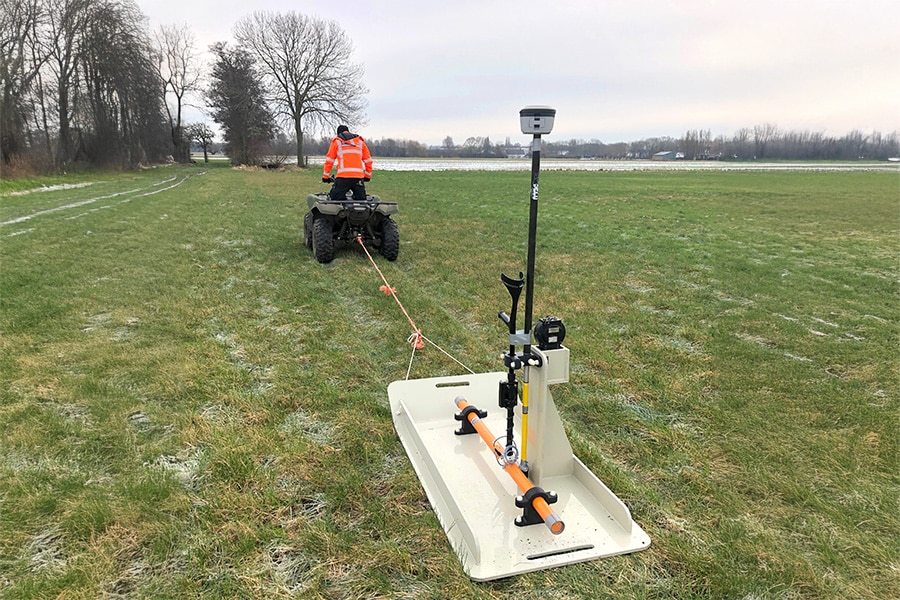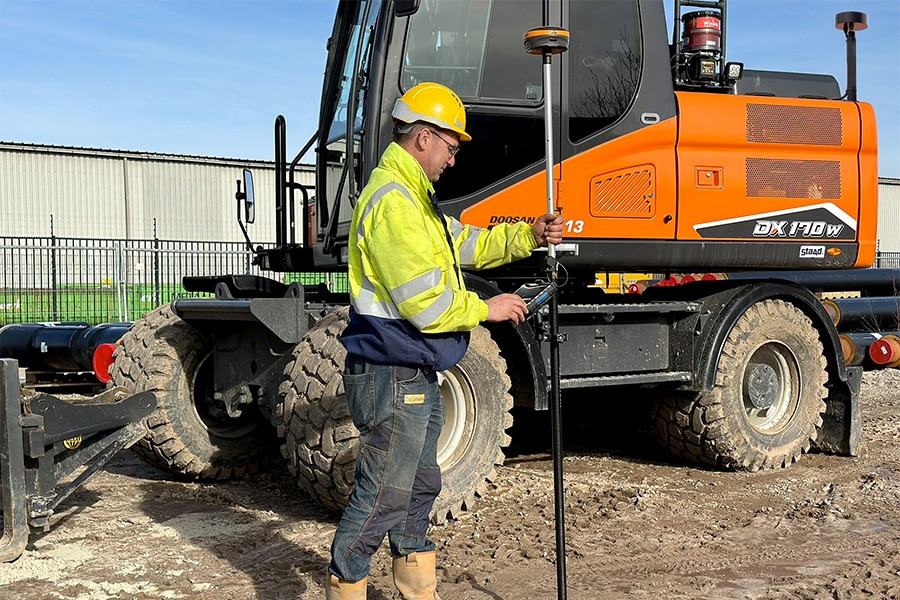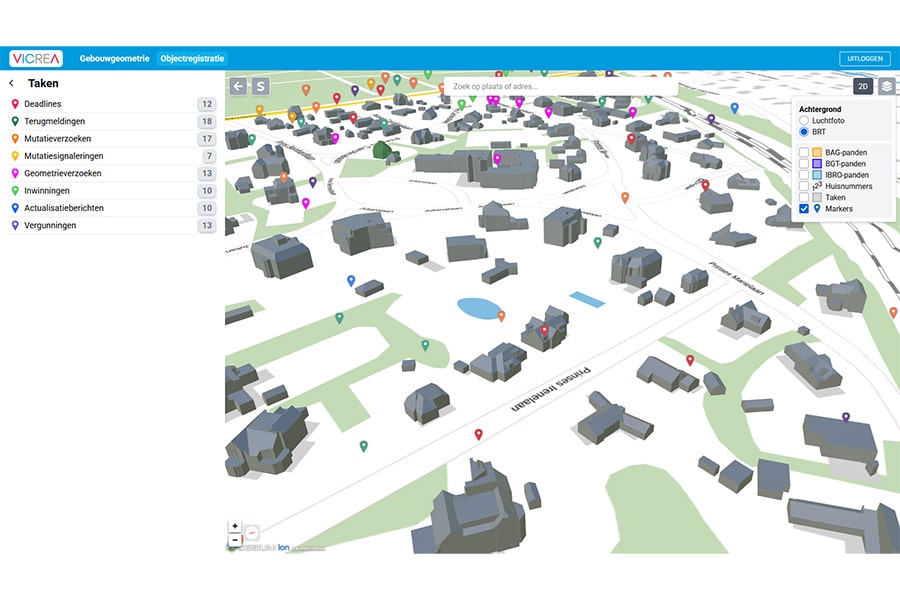
The power of the point cloud
March 26, 2019 is point cloud day. We will then take a detailed look at the acquisition, processing and extraction of information from point clouds. Multidisciplinary agency GeoNext will speak about working with point clouds on this day. Leading up to the event, we asked director Nico Schaefers the following questions: How do you get from a point cloud to the information you need? What is the quality of the various extraction methods and how do you ensure quality in projects?
How do you get from a point cloud to the information you need?
"Before you want to do anything with point clouds at all, you have to think about a number of issues, such as: what product does the customer want and with what geometric accuracy, can the requested information be extracted from a point cloud, and what collection method is appropriate? GeoNext, for example, measures many railroads: rails, overhead lines and all objects. The choice to scan is primarily based on safety. You are not allowed to enter the railroad track without permission, so laser scanning then makes sense to avoid measuring in a train-free period (almost always therefore at night). A disadvantage of laser scanning is that welds (with the exception of ES welds) in the rails are hardly visible in the point cloud. This is why we measure the welds traditionally."
What is the quality of the various collection methods?
"Nowadays, there are several methods for collecting point clouds. These can be divided into two major groups: measuring with cameras (photo or video) and with laser scanners. When recording using a still or video camera, the subject is projected onto a light-sensitive sensor. This captures the reflected light, similar to a human eye. The projected image is on a plane, so there is no depth information present. By taking pictures from two different vantage points (stereo photography), a 3D image can be calculated. Through complicated computational techniques (aero triangulation, searching identical points, dense matching), the software calculates 3D coordinates and thus a point cloud in the overlap between photos.
Thus, the quality of this process is highly dependent on:
- the lighting conditions: are you photographing with full sun or gray skies;
- the contrast differences between pixels: if all pixels are the same color, it will be difficult to look for the corresponding pixels;
- the camera's sensor type: how light-sensitive is it, what is the physical size of the sensor and the dynamic range (the contrast difference the sensor can handle);
- and the choice of lens.
Take, for example, a photo taken with your smartphone: even though it has great resolution, the sensor is small and therefore low light sensitivity and with a small dynamic range, the lens is cheap and subject to image distortion. If you photograph with a medium format camera with a 5.3x4cm sensor (€80,000), you will get a completely different result. If you want to see a lot of detail from a drone, then a telephoto lens is necessary (100mm), but then you have less depth of field. All these aspects determine your shooting quality and ultimately the result of your point cloud.
Recording with a laser scanner is based on distance measurement. The scanner emits a laser pulse. This is reflected by the object and received again by the sensor. From the time difference between transmitting and receiving (or the phase difference, for phase scanners) the distance is calculated, the position of the scan head determines the horizontal and vertical angle. As with a tachymeter, this determines the 3D coordinates of the measured points. In dynamic scanning, a GNSS/INS navigation system is important for the absolute position. The quality of all these sensors determines the final relative quality of your point cloud. The cost of laser scanners ranges from several tens of thousands of dollars for an entry-level model to more than half a million for a comprehensive mobile mapping system. Finally, the collected point cloud still needs to be connected to the RD and NAP networks. Make a plan in advance in which you determine where to place the targets and which targets to use.
Most CAD packages are capable of reading point clouds so that geometry can be determined (modeled) from them. This requires a lot of routine. The first step is to cut up the point clouds so that it is workable in your CAD system. The second step is to identify an object . From a distance you can see what it is, on closer inspection it becomes more difficult (see photo). If your CAD package has all kinds of tools, for example to make cross-sections, this will certainly help the modeling. Nicer, of course, is to have automatic modeling, which is currently under strong development. In the latest version of Trimble Business Center (5.0) already contain some tools to model lampposts or trees."
How do you ensure quality in projects?
"Operating a laser scanner is not the point. The challenge is in connecting to the Primary Measurement Ground (PMG), demonstrating the quality achieved, and efficiently extracting the desired information. In particular, dynamic laser scanning at high accuracy under varying GNSS conditions is very complex. We have learned a great deal about this in recent years by walking the path of the 100 pitfalls. Land surveying with theodolite, distance measuring and leveling we have been doing for over 100 years, laser scanning is relatively new. You will have to master the process and workflow for a great result. "
The day of the point cloud - March 26
Professionals and specialists from different manufacturers will be present to share knowledge and experience. Lennart Querelle of GeoNext will give a presentation on 3D scanning and processing a point cloud to a BIM model in REVIT. Learn more about point cloud day, can be found here.
Point cloud day is part of Land Surveying 2.0.




